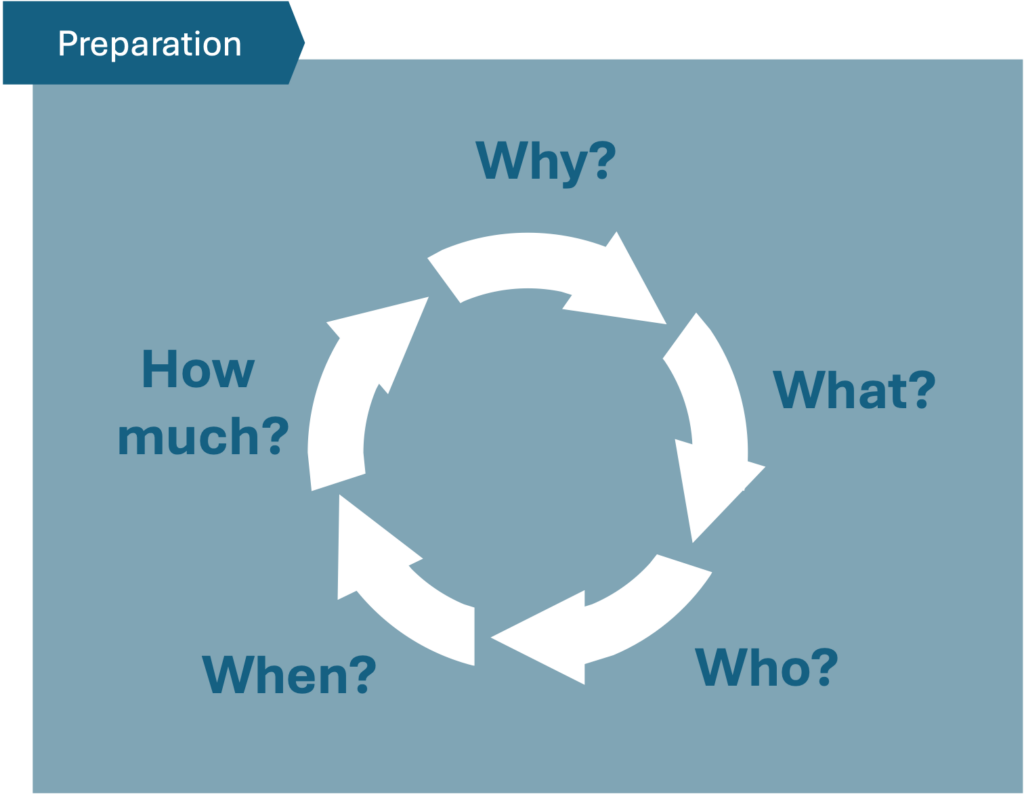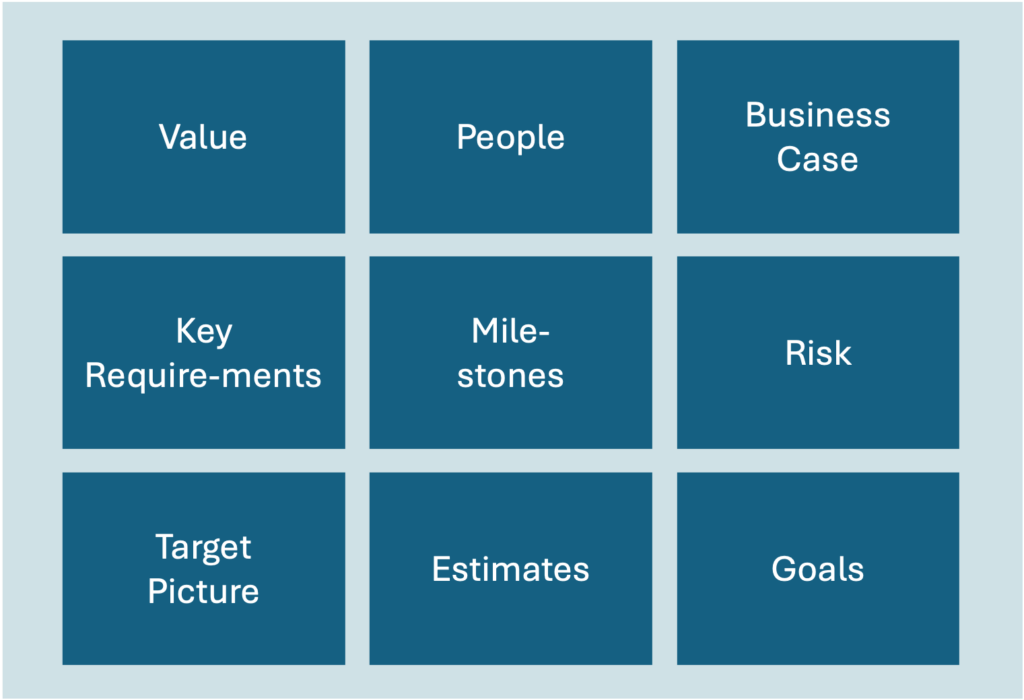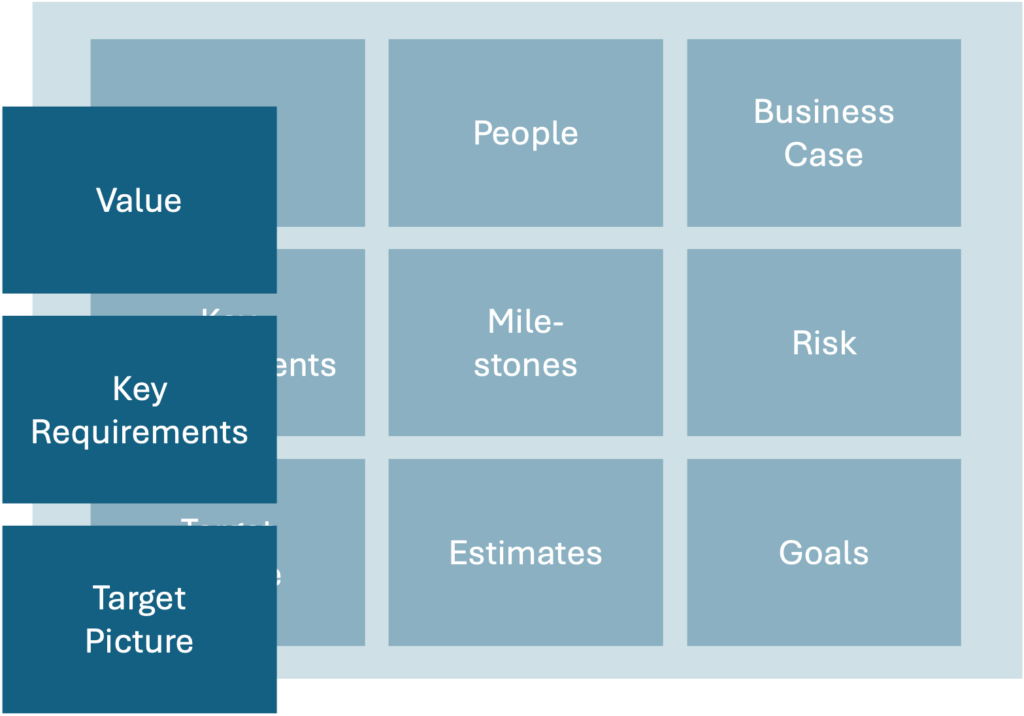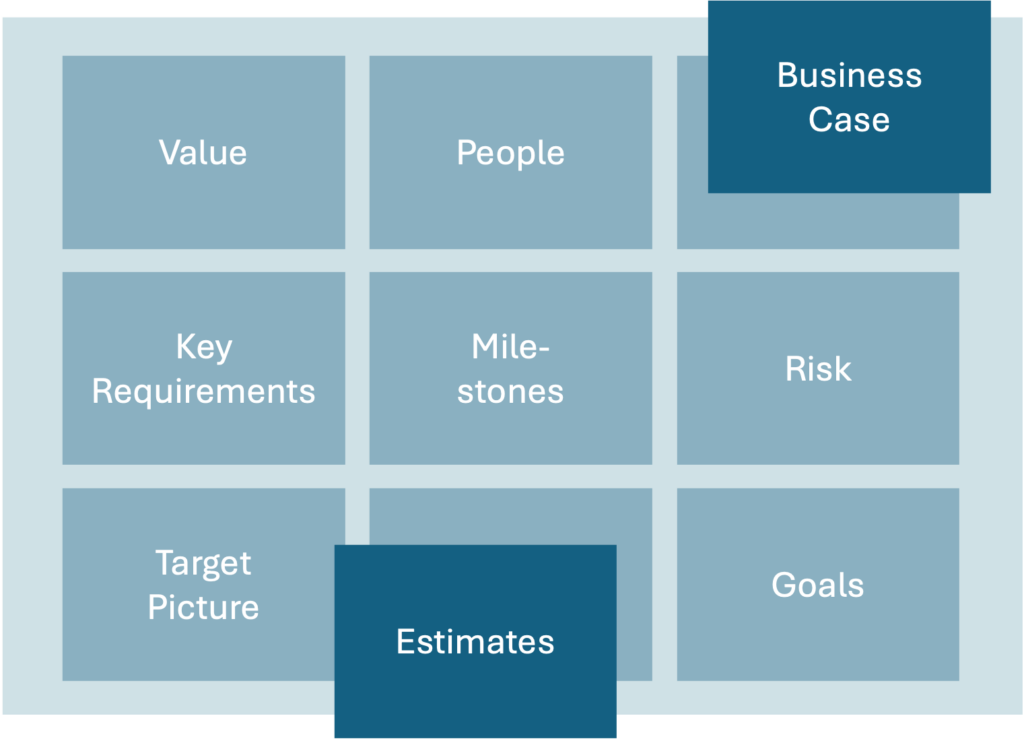Five Critical Questions
A typical preparation phase of a large-scale initiative takes about 4-8 weeks of very intensive work. The main purpose of this phase is to answer the five key questions about the project.
The questions are answered in an iterative manner. As you analyse more and more aspects of the project, you involve other people who contribute additional aspects to the overall picture.
At this stage, only a general overview is required. The details will be worked out later in the individual project teams. However, your analysis should be complete in the sense that no important aspect of the solution is missing. Resist the temptation to analyse some aspects too deeply. It is more important not to forget any crucial aspects or neglect a critical stakeholder.
It is also crucial to finalise the preparation quickly and make clear decisions. This will force you to think carefully about all the important aspects at the start of the endeavour. This creates orientation for all stakeholders, even if you revise some decisions at a later date.

Document Results In Initiative Overview Map
The five key questions are broken down in the Initiative Overview Map (IOM). The IOM ensures that the structure of the documentation remains stable throughout the initiative and that more and more details can be added in a consistent and comprehensible manner while the endeavour progresses. This strengthens traceability and commitment. Decisions take on meaning.

Preparation Phase
Question 1: Why?
The analysis begins with the motivation for launching the initiative in the first place. Typical examples are the introduction of a new product or the improvement of an existing process.
It is important to further deepen the understanding of the motivation by adding more details. For example, by explaining that the new product is introduced on a specific market in order to make so and so much additional profit.
Finally, you specify concrete success criteria for the project and, ideally, measurable KPIs. For example, if you recognise that you need to achieve a window of opportunity you can derive a completion date from this.

Preparation Phase
Question 2: What?
Once you know the “why”, you need to identify what you intend to deliver. This includes the value to the customer or user, the key requirements, such as legal obligations that need to be met, and a target picture from both a business and technical perspective.
Although all five questions are equally important in the preparation phase, the definition of the “what” is the activity that takes the most time and requires the most documentation. We therefore propose an optimised method for this analysis, which we call Flipchart Modelling.

Preparation Phase
Question 3: Who?
As soon as there is an initial understanding of the motivation and desired outcome, i.e. as soon as the building blocks of the end-to-end solution have been identified, the next step is to involve the people who are responsible for the building blocks and the associated teams and integrate them into the Virtual End-to-end Solution Organization (VEO).
The proposed solution is then discussed with these people in the next iteration and further insights are gained accordingly. More specifically, each team is represented by delegates in the VEST. The VEST is the group of experts who design the end-to-end solution.
In this way, new and better content and relevant people are gradually added to the IOM.

Preparation Phase
Question 4: When?
As the next step you can define a first draft of work packages and milestones.
Inseparable from the work packages, you should create a register of the risks associated with the respective work packages. This association is helpful later onbecause those responsible for the work packages can also be required to actively manage the associated risks.
Again, it should be pointed out that the whole process is iterative. For example, if you identify a work package which cannot be delivered by the teams of the VEO you have to involve additional people and align the high-level solution with them which may lead to additional insights etc.

Preparation Phase
Question 5: How Much?
The last step of the preparation phase includes estimates for efforts and time and development of the business case.

- Dirk Krafzig
Entrepreneur, SOAPARK
